 ホーム
ホーム
 エネルギー状況
エネルギー状況 再生可能エネルギー
再生可能エネルギーについて
 エネルギーを考える
エネルギーを考える 節電意識チェック
節電意識チェック まとめ
まとめ Language
Language再生可能エネルギーの種類
昨今話題の再生可能エネルギー。太陽光発電や風力発電、バイオマス発電等よく知られているものもあります。
しかし、再生可能エネルギーにはまだまだたくさんの種類があることをご存じでしょうか。また、皆さんは自然エネルギーをご存じでしょうか。
要約すると、自然エネルギーとは自然現象から得られるエネルギーのことを指します。
では、再生可能エネルギーと自然エネルギーの違いはなんでしょうか。
その違いを詳しく知っている人は意外と少ないのでは、と思います。
このページでは、皆さんが知らない、かもしれない、再生可能エネルギー開発の種類や再生可能エネルギーと自然エネルギーの違いをお届けします。
再生可能エネルギーと自然エネルギーの違い

再生可能エネルギーは再利用することができるエネルギー全般を表す言葉です。
ここでいう再生可能とは「使ってもまた資源が補充される 」という意味で大まかにとらえてください。
例えば、石油や天然ガスなどの化石燃料は消費量に対して再生されず、いずれ枯渇してしまいます。
それに対して、例えば木質バイオマスであれば、木を植えて育つ量が使用量より多ければ、エネルギーは枯渇しません。
そして、自然エネルギーは再生可能エネルギーの一部です。
再生可能エネルギー
消費しても、その補充が定常的に期待できるエネルギーの総称。
自然エネルギーの他に、「バイオマスエネルギー」や「温度差・濃度差エネルギー」など自然現象ではなく、別の再利用できる資源を使って生み出されるものも含みます。
自然エネルギー
再生可能エネルギーのうち、自然現象から得られるエネルギー。
主に太陽光発電、風力発電、中小水力発電、地熱発電などが該当します。
再生可能エネルギーの種類
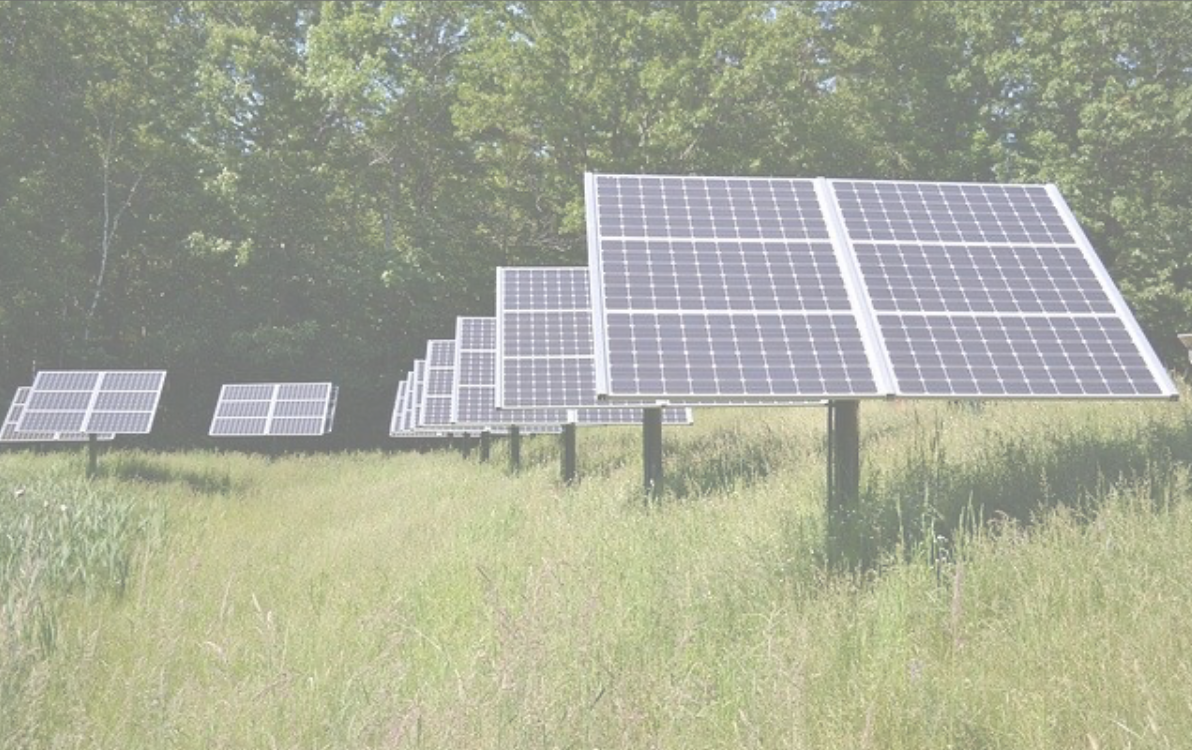
太陽光発電
シリコン半導体などに光が当たると電気が発生する現象を利用し、太陽の光エネルギーを太陽電池(半導体素子)により直接電気に変換する発電方法です。
特徴として、太陽光がエネルギー源のため日が当たる所ならどこでも発電できる、建物の屋上等を使えるため用地を新たに用意する必要がないということが挙げられます。
更には非常用の電源としても使えます。
欠点としては、発電量が天候や時間に大きく左右されやすいという点、導入に資金がかなり必要という点があげられます。
日本における導入量は近年着実に伸びており、2016年度末累積で3,910万kWに達しました。
太陽光発電導入の実績において日本は、中国、ドイツとともに世界をリードしています。
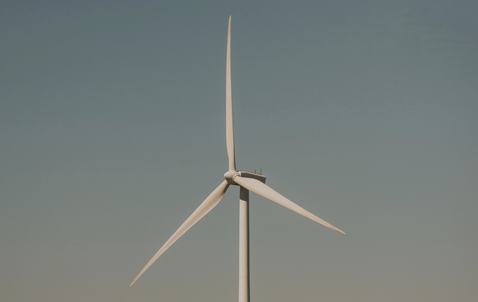
風力発電
風のエネルギーを電気エネルギーに変えるのが風力発電です。
風力発電は、変換効率が良く、大規模に発電できれば発電コストが火力並みであるため、経済性も確保できる可能性のあるエネルギー源です。
日本では陸上風力の設置が進んでいますが、導入可能な適地が限定的であることから、大きな導入ポテンシャルを持つ洋上風力発電も検討・計画されています。
欧米諸国に比べると導入が遅れているものの、2000年以降導入件数が急激に増え、2016年度末で2,203基、累積設備容量は335.7万kWまで増加しています。
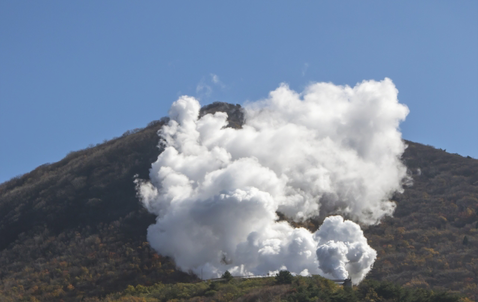
地熱発電
日本は火山帯に位置するため、地熱利用は戦後早くから注目されていました。
本格的な地熱発電所は1966年に運転を開始し、現在では東北や九州を中心に展開されています。
地熱発電の大きなメリットとして、他の自然エネルギーとは違い、発電量が天候や時間に左右されないところがあげられます。
地熱を利用するのでエネルギーが枯渇することもないです。
更に、発電に使った高温の蒸気・熱水は、農業用ハウスや魚の養殖、地域の暖房などに再利用ができます。
総発電電力量はまだ少ないものの、安定して発電ができる純国産エネルギーとして注目されています。
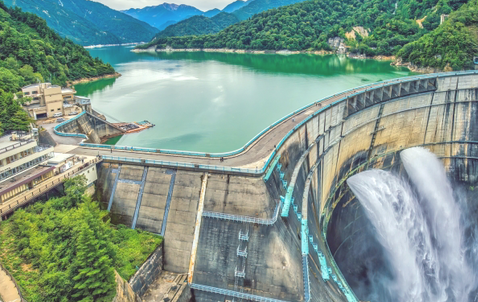
水力発電
水資源に恵まれた日本では、発電への利用も昔から盛んで、国内でまかなうことのできる、貴重なエネルギー源となっています。
自然条件に左右されにくく、一度発電所を作ればその後数十年にわたり発電が可能となっています。
水力発電といえば大きなダムを想像しますが、近年は中小水力発電の建設が活発化しています。
中小水力はさまざまな規模があり、河川の流水を利用する以外にも、農業用水や上下水道を利用する場合もあります。
すでに開発ずみの大規模水力に比べて、まだまだ開発できる地点が多く残されており、今後の更なる開発が期待されます。

バイオマス発電
バイオマスとは、動植物などから生まれた生物資源の総称です。
バイオマス発電では、この生物資源を「直接燃焼」したり「ガス化」するなどして発電します。
技術開発が進んだ現在では、様々な生物資源が有効活用されています。
光合成によりCO2を吸収して成長するバイオマス資源を燃料とした発電は「京都議定書」における取扱上、CO2を排出しないものとされており地球温暖化等の環境保全として非常に優れたものになっています。
また、未活用の廃棄物を燃料とするバイオマス発電は、廃棄物の再利用や減少につながり、循環型社会構築に大きく寄与します。
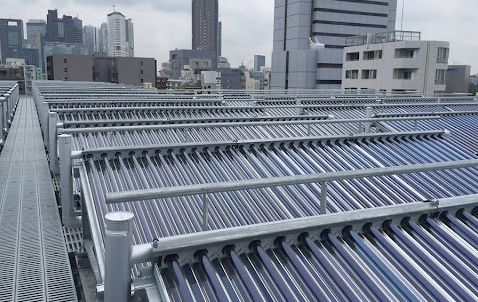
太陽熱利用
太陽の熱エネルギーを太陽集熱器に集めることで熱媒体を暖め、給湯や冷暖房などに活用するシステムです。
機器の構成が単純であるため、導入の歴史は古く実績も多いエネルギー開発法です。
太陽光発電と同じく、システムのエネルギー源は太陽エネルギーです。
そのため、エネルギー源そのものの導入コストは永久的に無料です。
また、簡単なシステムであるため、特別な知識や操作が必要なく、一般事務所だけでなく給湯利用の多い介護施設などでも手軽に導入できます。

雪氷熱利用
冬の間に降った雪や、冷たい外気を使って凍らせた氷を保管し、冷熱が必要となる時季に利用するものです。
寒冷地の気象特性を活用するため、利用地域は限定されますが、資源は豊富にあることから注目されている取組です。
寒冷地では従来、除排雪、融雪などで膨大な費用がかかっていた雪を、積極的に利用することでメリットに変えることも可能になっています。
また、雪氷熱の積極利用により企業イメージアップに加え、商品の付加価値向上に寄与しています。
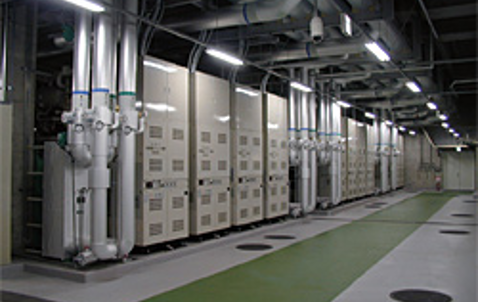
温度差熱利用
地下水、河川水、下水などの水源を熱源としたエネルギーです。
一般的に夏場は水温の方が温度が低く、冬場は水温の方が温度が高いです。
この、水の持つ熱をヒートポンプを用いて利用したものが温度差熱利用と呼ばれます。
冷暖房など地域熱供給源として全国で広まりつつあります。
システム上、燃料を燃やす必要がないため、クリーンなエネルギーと呼ぶことができ、環境への貢献度も高いシステムです。
また、熱源と消費地が近いこと、及び、温度差エネルギーは民生用の冷暖房に対応できることから、新しい都市型エネルギーとして注目されています。

地中熱利用
地中熱とは、浅い地盤中に存在する低温の熱エネルギーのことです。
大気の温度に対して、地中の温度は地下10~15mの深さになると、年間を通して温度の変化が見られなくなります。
そのため、夏場は外気温度よりも地中温度が低く、冬場は外気温度よりも地中温度が高くなり、この温度差を利用して効率的な冷暖房等を行います。
地中熱利用における冷暖房は、空気熱源ヒートポンプ(エアコン)を利用することができない外気温-15℃以下の環境においても利用可能で、放熱用室外機がなく、稼働時騒音が非常に小さくなっています。
また、地中熱交換器は密閉式なので、環境汚染の心配がなく、冷暖房に熱を屋外に放出しないため、ヒートアイランド現象の元になりにくい仕組みになっています。
まとめ
このページだけでも9つほど、再生エネルギーの例を紹介しましたが、実はこれ以外にも「バイオマス熱利用」、「空気熱利用」「海洋温度差発電」等、まだまだたくさんの再生エネルギーがあります。
そして、きっとこれからも更にその種類は増えていくでしょう。
このように新鋭気鋭の再生可能エネルギー。
皆さんは何故ここまで再生可能エネルギーが賞賛されているのかをご存じでしょうか。
Types of renewable energy
Renewable energy is a hot topic these days.Some are well known, such as solar power, wind power, and biomass power.But did you know that there are still many types of renewable energy?Moreover, do you know natural energy?In summary, it refers to the energy obtained from natural phenomena.So what is the difference between renewable energy and renewable energy?I think that there are surprisingly few people who know the difference in detail.On this page, we will tell you about the types of renewable energy development and the difference between natural energy and renewable energy that you may not know.
The difference between renewable energy and natural energy

Renewable energy is a general term for energy that can be reused.Renewable here means that "resources will be replenished even if you use it".
For example, fossil fuels such as oil and natural gas are not regenerated with respect to consumption and will eventually be depleted.On the other hand, in the case of woody biomass, for example, if the amount of trees planted and grown is greater than the amount used, energy will not be depleted.
And natural energy is part of renewable energy.
renewable energy...A general term for energy that can be expected to be replenished constantly even if it is consumed.In addition to natural energy, it also includes energy produced using other reusable resources rather than natural phenomena such as "biomass energy" and "temperature difference / concentration difference energy".
natural energy...Of the renewable energies, the energy obtained from natural phenomena.Mainly applicable to solar power generation, wind power generation, small and medium-sized hydropower generation, geothermal power generation, etc.
Types of renewable energy

Solar power
It is a power generation method that directly converts the light energy of the sun into electricity by a solar cell (semiconductor element) by utilizing the phenomenon that electricity is generated when light hits a silicon semiconductor.
As a feature, since sunlight is the energy source, it can generate electricity anywhere in the sun, it can be used on the roof of a building, so there is no need to prepare a new site, and it can also be used as an emergency power source.
The disadvantages are that the amount of power generated is quite sensitive to weather and time, and it requires a lot of money to install.
The amount introduced in Japan has been steadily increasing in recent years, reaching 39.1 GW cumulatively at the end of 2016. In terms of the track record of introducing solar power generation, we are leading the world along with China and Germany.

Wind-power generation
Wind power generation converts wind energy into electrical energy.
Wind power generation is an energy source that has good conversion efficiency, and if it can generate electricity on a large scale, the cost of power generation is comparable to that of thermal power generation, so it may be economical.
In Japan, the installation of onshore wind power is progressing, but since the suitable sites that can be introduced are limited, offshore wind power generation with great introduction potential is also being considered and planned.
Although the introduction is delayed compared to Western countries, the number of installations has increased sharply since 2000, and by the end of 2016, it has increased to 2,203 units and the cumulative installed capacity has increased to 3,357,000 kW.

Geothermal power generation
Since Japan is located in the volcanic belt, the use of geothermal heat has been attracting attention since the early postwar period. A full-scale geothermal power plant started operation in 1966 and is now being developed mainly in Tohoku and Kyushu. One of the major advantages of geothermal power generation is that, unlike other natural energies, the amount of power generated is not affected by weather or time. Since it uses geothermal heat, it does not run out of energy. Furthermore, the high-temperature steam and hot water used for power generation can be reused for agricultural houses, fish farming, and regional heating. Although the total amount of power generated is still small, it is attracting attention as a purely domestic energy that can generate electricity in a stable manner.

Hydropower
In Japan, which is blessed with water resources, it has been used for power generation for a long time, and it is a valuable energy source that can be covered domestically. It is not easily affected by natural conditions, and once a power plant is built, it can generate electricity for decades. When you think of hydropower, you can imagine a big dam, but in recent years, the construction of small and medium-sized hydropower has become active. Small and medium-sized hydropower has various scales, and in addition to using running water from rivers, it may also use agricultural water and water and sewage. Compared to the large-scale hydropower that has already been developed, there are still many points that can be developed, and further development is expected in the future.

Biomass power generation
Biomass is a general term for biological resources created from animals and plants. In biomass power generation, these biological resources are "directly burned" or "gasified" to generate electricity. Now that technological development has progressed, various biological resources are being effectively utilized. Power generation using biomass resources that grow by absorbing CO2 by photosynthesis as fuel is not considered to emit CO2 in terms of handling under the "Kyoto Protocol", making it extremely excellent for environmental conservation such as global warming. increase. In addition, biomass power generation using unused waste as fuel leads to reuse and reduction of waste, which greatly contributes to the construction of a sound material-cycle society.

Utilization of solar heat
It is a system that collects the heat energy of the sun in a solar collector and uses the heat medium for hot water supply and heating / cooling. Since the equipment configuration is simple, it is an energy development method with a long history of introduction and many achievements. Like photovoltaics, the energy source for a system is solar energy. Therefore, the introduction cost of the energy source itself is permanently free. In addition, because it is a simple system, it does not require any special knowledge or operation, and can be easily introduced not only in general offices but also in nursing care facilities that frequently use hot water.

Utilization of snow and ice heat
It stores snow that fell during the winter and ice that has been frozen using cold outside air, and is used during the season when cold heat is required. In order to utilize the meteorological characteristics of cold regions, the area of use is limited, but it is an initiative that attracts attention due to its abundant resources. In cold regions, it is possible to turn snow, which used to cost a huge amount of money for snow removal and melting, into a merit by actively using it. In addition to improving the corporate image by actively using snow and ice heat, we are contributing to increasing the added value of our products.

Utilization of temperature difference heat
Energy that uses water sources such as groundwater, river water, and sewage as heat sources. In the summer, the water temperature is lower, and in the winter, the water temperature is higher. This heat difference heat is used by using the heat of water using a heat pump. It is becoming widespread nationwide as a district heating source such as heating and cooling. It can be called clean energy because the system does not require burning fuel. It is a system that contributes to the environment. Also, the heat source and the consumption area are close. In addition, temperature difference energy is attracting attention as a new urban energy because it can be used for consumer heating and cooling.

Utilization of geothermal heat
Geothermal heat is low-temperature thermal energy that exists in shallow ground. When the temperature in the ground reaches a depth of 10 to 15 m below the temperature of the atmosphere, the temperature does not change throughout the year. Therefore, the underground temperature is lower than the outside air temperature in the summer, and the underground temperature is higher than the outside air temperature in the winter, so this temperature difference is used for efficient heating and cooling. It can be used even in an environment where the air heat source heat pump (air conditioner) cannot be used and the outside temperature is -15 ° C or less. There is no outdoor unit for heat dissipation, and the noise during operation is extremely low. In addition, since the geothermal heat exchanger is a closed type, there is no concern about environmental pollution, and heat is not released to the outside for heating and cooling, so it is a mechanism that is less likely to cause the heat island phenomenon.
summary
I introduced about 9 items on this page alone, but in fact, there are many more such as "biomass heat utilization", "air heat utilization", and "ocean thermal energy conversion". And I'm sure there will be more types in the future. In this way, up-and-coming renewable energy. Do you know why renewable energy is so admired? The reasons are summarized on the next page. Please take a look.